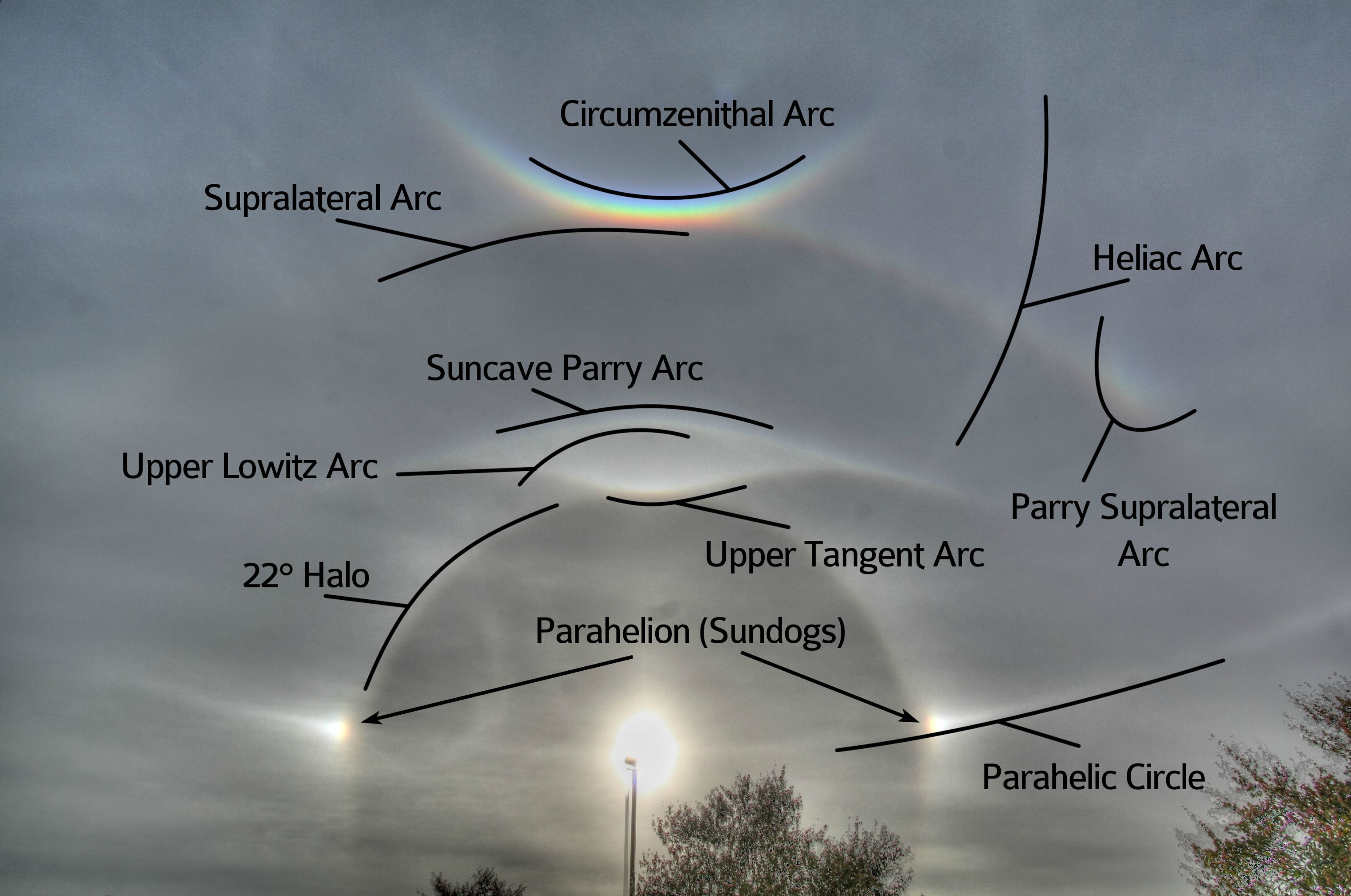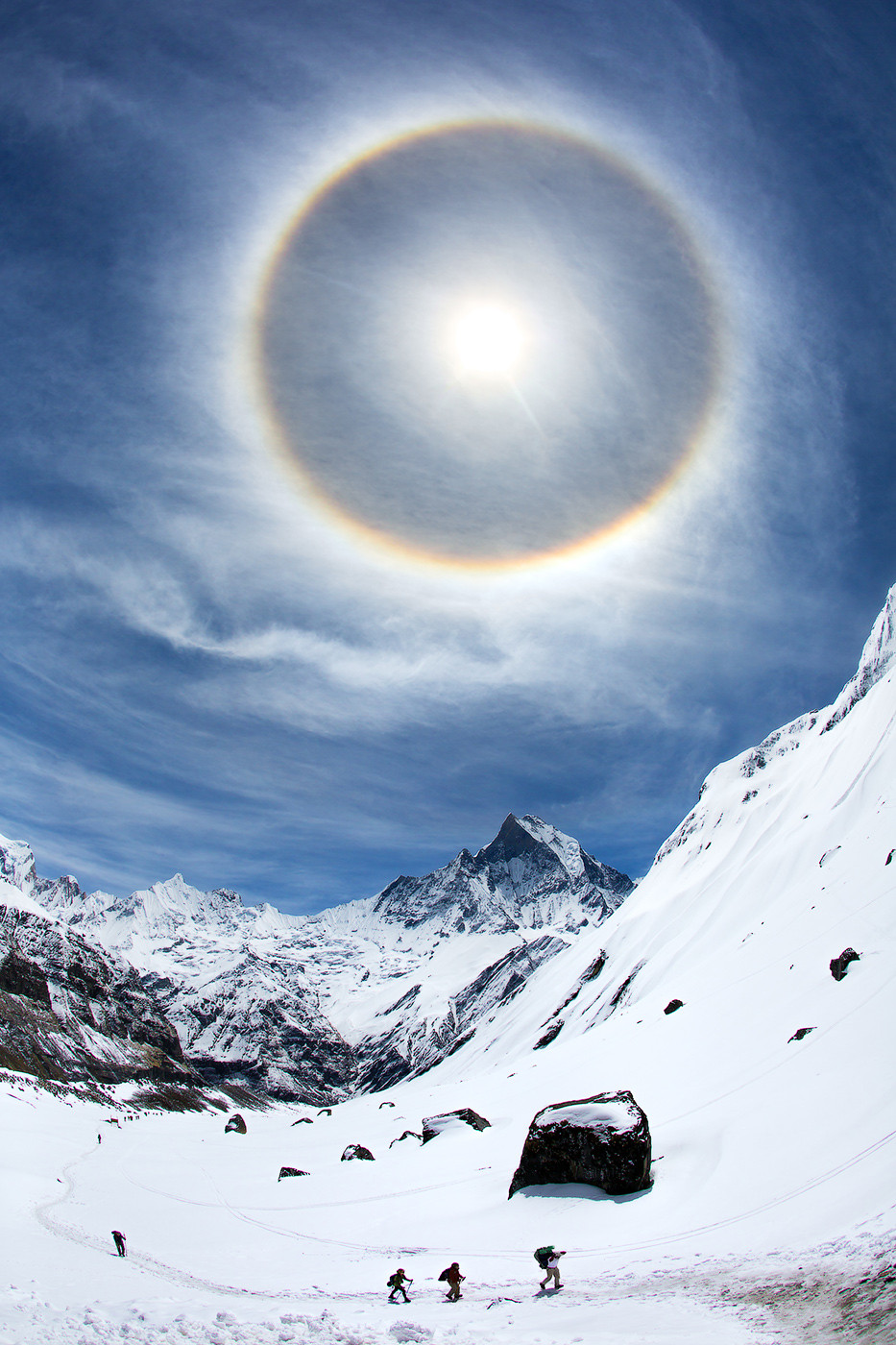Recently, it was a fine sunny morning (around 100 minutes after sunrise) and the sun was briefly behind a small cloud. Near the sun was one of those wispy clouds one sometimes sees (possibly Cirrus clouds?), at the very top of which I suddenly saw a very bright 'band' of rainbow (wider in the red to violet direction than a normal rainbow, and spanning the width of the cloud) and perhaps 15 or so degrees away from the sun. I unfortunately did not have a camera so my appalling paint drawing will have to suffice (the lines are the cloud, and the band is the approximate size of the band of rainbow; the omelette is the sun behind a cloud). It was very bright at first and surprisingly vivid (all colours red through violet), but faded within about 20 seconds from when I saw it; it was one of the most remarkable things I have ever seen: a bright rainbow band in a small cloud near the sun. My question is: I know about iridescent clouds, and circumhorizontal arcs, but does anyone know what this would be since it was a band of wide rainbow spanning the width of the cloud, so near the sun?
Edit: From what's been said, I think what I saw was likely a sun dog, something I've been waiting years to see, and didn't even know it when I saw one! The interesting thing about this one was that it had distinct blue and violet bands in addition to the rest of the spectrum, something I haven't seen in any pictures (although I am aware that cameras don't necessarily capture violet well), and which some sites e.g. here and here appear to imply is not a feature of most sundogs, with a blue-white tail instead being typical. I wonder if anyone could explain what might make one more distinct. Perhaps increased stability of the ice crystals might be the answer, or is it more likely that the violet band was not actually as vivid as I remember it to have been?





